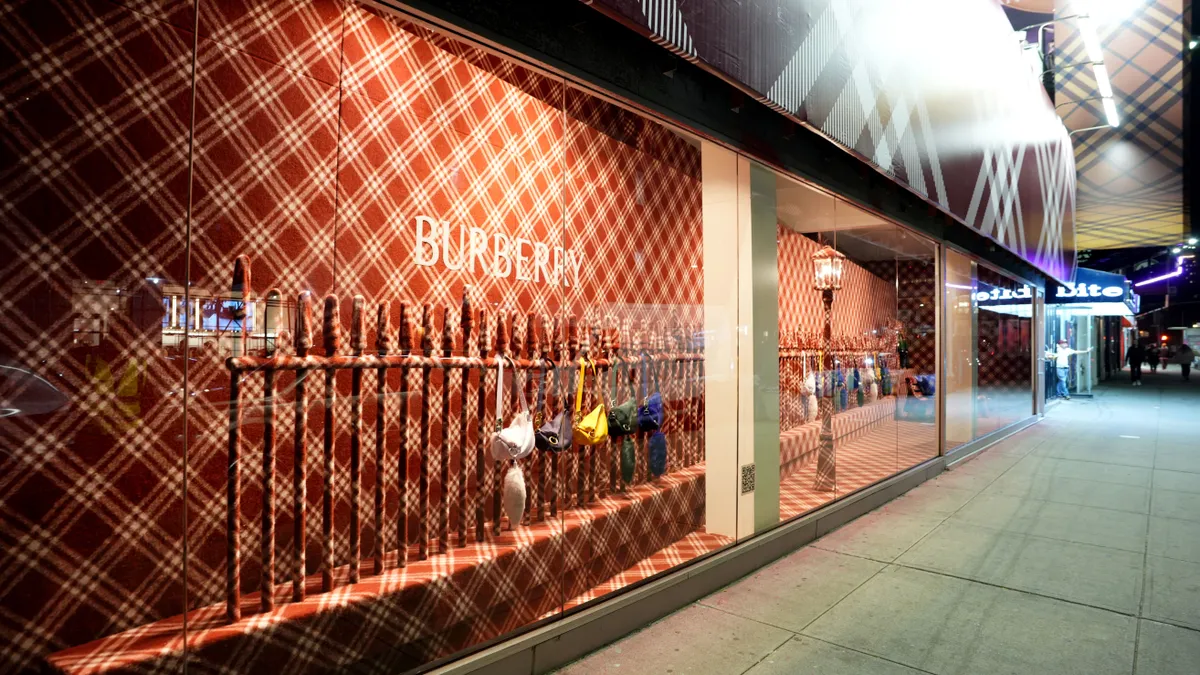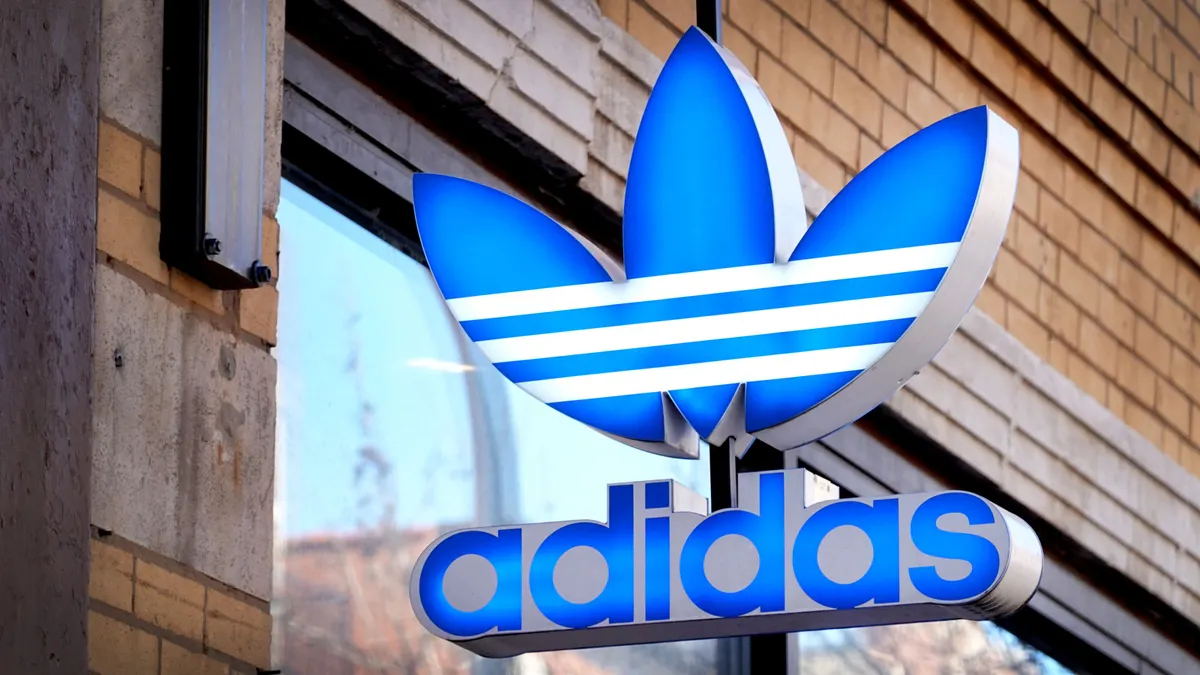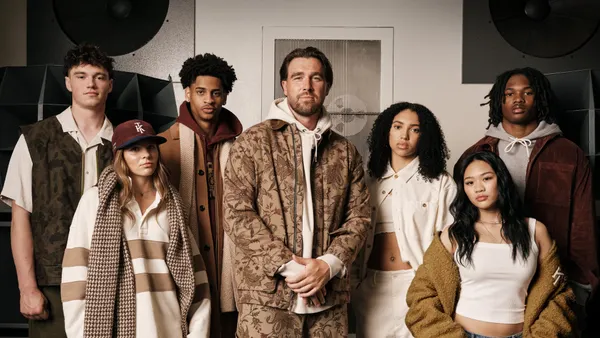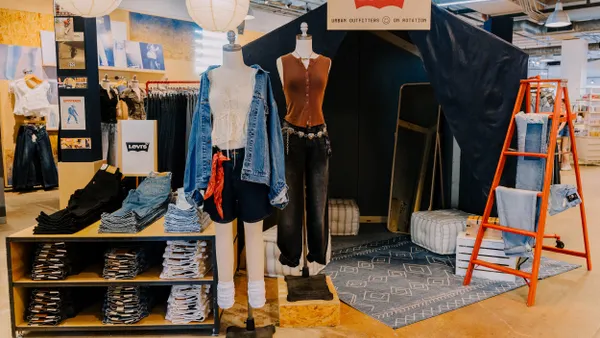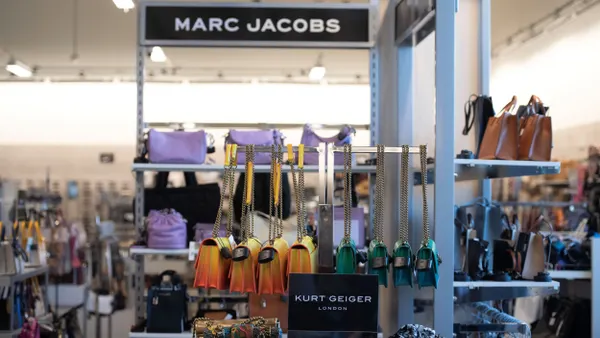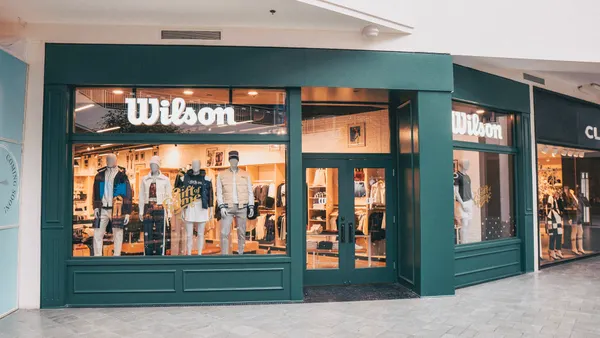Dive Brief:
- Burberry Group reported H1 revenue increase of 4% to 1.4 billion pounds, approximately $1.7 billion at current exchange rates, on Thursday. Meanwhile, profits dipped 18% to 158 million pounds.
- Sales in the Americas were down 9% in the half and dropped 10% for Q2 following an 8% sales decline in Q1. Burberry said in its earnings statement that “the American customer has remained weak overall” but the company is nonetheless “pleased with the progress made with our customer acquisition programme with an increased share of higher income female clients” in the region.
- In Asia, H1 sales rose 18% overall, though Q2 sales in China dipped 8%. Meanwhile, EMEIA comparable store H1 sales rose 14%, up 10% in Q2 alone. Wholesale revenue fell 8% for the half, which the company said was driven by a weak Americas performance.
Dive Insight:
Luxury continues to see the effects of an overall market normalization as Burberry joins companies including LVMH, Richemont and Kering in an earnings slump.
Burberry said in its release that the slowdown in luxury demand globally “is having an impact on current trading” and added that “if the weaker demand continues, we are unlikely to achieve our previously stated revenue guidance for FY24.” As a result, the company adjusted its operating profit “towards the lower end of the current consensus range.”
The company has been working on a larger brand refresh recently, and its first collection under newly appointed creative director Daniel Lee arrived in stores in September. Burberry said in its release that the new line “complements our existing strong core offer and while it is still too soon to have an in-depth read on commercial performance, the early indicators are encouraging.”
The brand has also opened or refurbished 33 stores in H1, for a total of 140 newly designed shops to date.
Sustainability was also on the agenda, and in its earnings the company touted its plastic-free packaging and its overall commitment to “eliminate plastic from our consumer packaging by FY26.” Burberry also said it had expanded its aftercare services so customers could more easily “extend the life of their products.”
This year has also brought some C-suite changes, including January appointments of Giorgio Belloli as the chief digital, customer and innovation officer and Delphine Sonder as the chief merchandising officer. In March, Kate Ferry joined as the new CFO, and in April Burberry hired Klaus Bierbrauer to be its new chief supply chain and industrial officer.
“We made good progress against our strategic goals, executing our priorities at pace,” Jonathan Akeroyd, CEO, said in the release. “We continued to build momentum around our new creative vision with the launch of our Winter 23 collection in September, the first designed by Daniel Lee. While the macroeconomic environment has become more challenging recently, we are confident in our strategy to realise our potential as the modern British luxury brand, and we remain committed to achieving our medium and long-term targets.”



